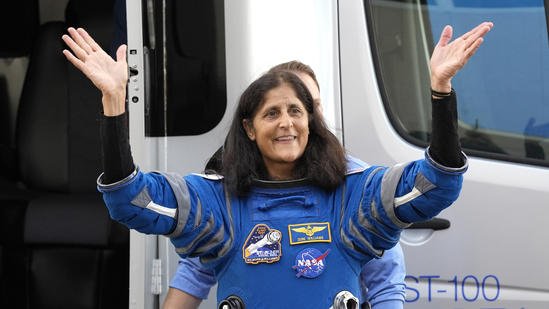Astronauts Sunita Williams and Butch Wilmore made history during their extended missions aboard the International Space Station (ISS), spending several months in the harsh environment of space. While living in space presents numerous challenges, one of the most vital aspects of their mission was ensuring they had adequate nutrition and sustenance to stay healthy and perform their duties. Both astronauts spent nearly nine months aboard the ISS, where the food and lifestyle differ drastically from Earth. Their experience offers unique insights into how astronauts survive long-term missions, with a particular focus on the food they ate.
Space Food: A Lifeline in Microgravity
Living on the ISS for extended periods requires careful planning to ensure astronauts stay fit and healthy. Unlike on Earth, where gravity plays a significant role in digestion, microgravity creates a number of challenges for astronauts. For one, food must be designed to stay intact and be easy to consume in a weightless environment. Meals are carefully engineered, packaged, and prepared to meet astronauts’ nutritional needs and prevent contamination in space.
NASA’s food scientists design space food to be lightweight, compact, and easy to store. Sunita Williams and Butch Wilmore were provided with a variety of specially prepared meals that ensured they received the right amount of calories, vitamins, and minerals necessary for their strenuous activities aboard the ISS. These meals are freeze-dried or dehydrated, meaning the astronauts have to add water to rehydrate them before eating. Meals are packaged in vacuum-sealed containers to prevent spoilage, and the astronauts use special utensils and techniques to eat in the microgravity environment.
What Did Sunita Williams and Butch Wilmore Eat?
During their missions, Sunita Williams and Butch Wilmore were given a wide range of food options, although their diet had to adhere to strict nutritional requirements. The food choices available to them included:
- Freeze-dried and Dehydrated Foods: A large portion of their diet consisted of freeze-dried meals, which included favorites like beef stew, pasta dishes, scrambled eggs, and fruits. These meals were carefully prepared before their launch and packaged in a way that ensured they would remain safe to consume for months.
- Fresh Fruits and Vegetables: Occasionally, astronauts aboard the ISS receive a shipment of fresh produce via resupply missions. During these times, Williams and Wilmore were able to enjoy fresh items such as apples, carrots, and leafy greens. Fresh food was a welcome change from the typical freeze-dried meals, offering a burst of flavor and additional nutrients.
- Snacks and Sweets: While their main meals were carefully planned for nutrition, astronauts also enjoyed snacks and treats to keep morale high. These snacks included nuts, trail mix, granola bars, cookies, and even chocolate. Having familiar comfort foods helps astronauts maintain a sense of normalcy during long-duration missions, where psychological well-being is just as important as physical health.
- Beverages: Staying hydrated is crucial in space, and astronauts are provided with a variety of drinks. Water is the mainstay, but astronauts also consume rehydrated juices, coffee, tea, and even sports drinks. NASA has developed a method to recycle water on the ISS, turning waste water into clean, drinkable water through advanced filtration systems.
- Specialty Meals for Special Occasions: For special events, such as holidays or milestone celebrations, astronauts aboard the ISS sometimes receive special meals. For example, during Williams’ mission, she enjoyed a special Thanksgiving meal with fellow astronauts, which included turkey and other traditional dishes. These meals are a way to celebrate the holidays and stay connected with family traditions, even when thousands of miles away from home.
Surviving in Space: More Than Just Food
While food is an essential part of survival in space, it’s not the only factor that contributes to an astronaut’s well-being. Sunita Williams and Butch Wilmore had to stay physically fit, mentally alert, and emotionally stable during their nine-month missions. Exercise was a critical part of their daily routine, as the lack of gravity leads to muscle atrophy and bone density loss. They used specialized equipment such as treadmills, stationary bikes, and resistance machines to maintain their fitness.
Mental health was also a priority, with regular communication with loved ones and support from mission control helping to ease the isolation of living in space for such an extended period. NASA has long recognized the importance of psychological health on long-duration missions, and astronauts are trained to cope with stress, isolation, and the challenges of living in confined spaces.
Life in Space Is Possible, But It Requires Preparation
The experiences of Sunita Williams and Butch Wilmore aboard the ISS highlight the significant efforts required to sustain human life in space. From carefully crafted meals to exercise regimens and psychological support, surviving in space for nine months demands precision, planning, and resilience. Thanks to the advancements in space food technology and the support systems in place, astronauts like Williams and Wilmore can thrive in space for extended periods, taking humanity closer to further space exploration and the possibility of longer missions to destinations such as Mars.

